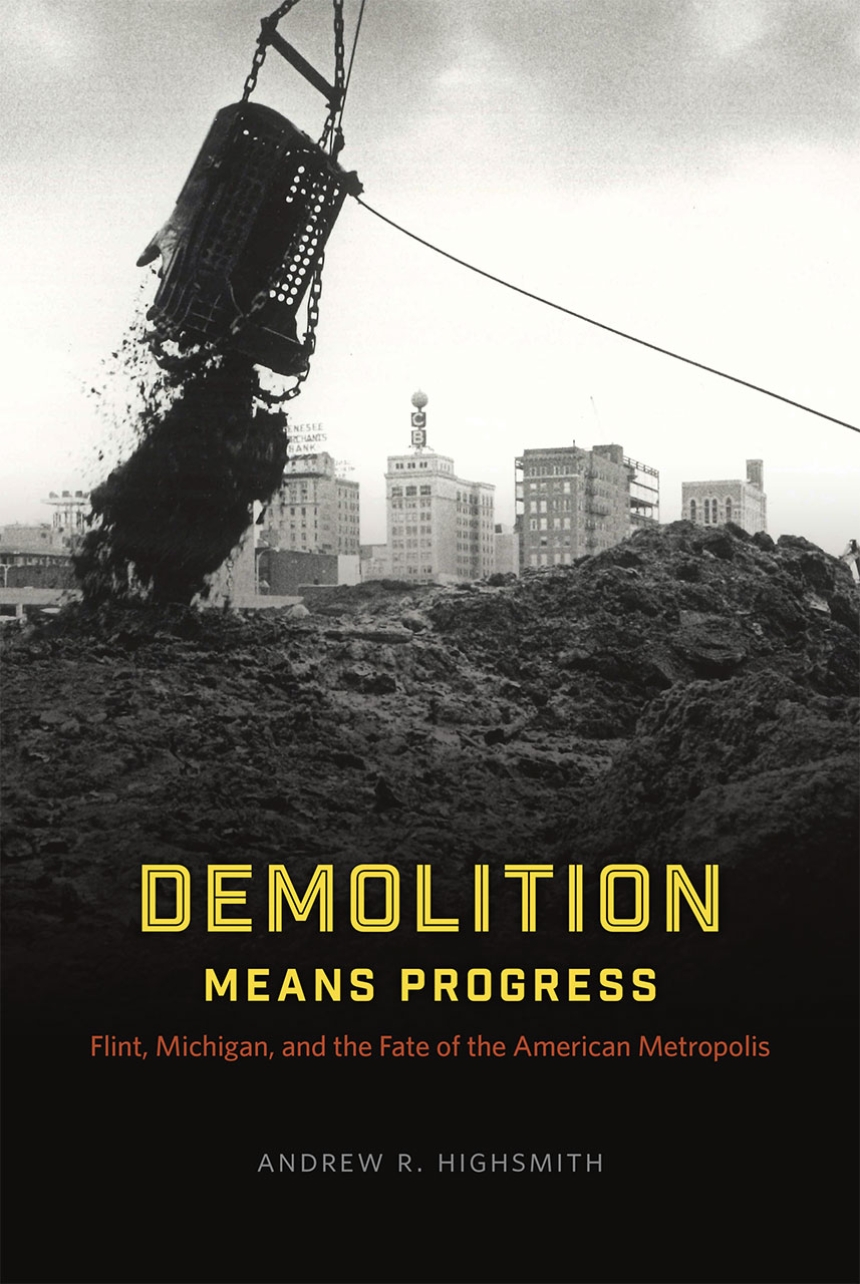Demolition Means Progress
Flint, Michigan, and the Fate of the American Metropolis
Demolition Means Progress
Flint, Michigan, and the Fate of the American Metropolis
In one of the most comprehensive works yet written on the history of inequality and metropolitan development in modern America, Andrew R. Highsmith uses the case of Flint to explain how the perennial quest for urban renewal—even more than white flight, corporate abandonment, and other forces—contributed to mass suburbanization, racial and economic division, deindustrialization, and political fragmentation. Challenging much of the conventional wisdom about structural inequality and the roots of the nation’s “urban crisis,” Demolition Means Progress shows in vivid detail how public policies and programs designed to revitalize the Flint area ultimately led to the hardening of social divisions.
398 pages | 35 halftones, 17 maps, 3 tables | 6 x 9 | © 2015
Historical Studies of Urban America
Geography: Urban Geography
History: American History, Urban History
Political Science: Race and Politics
Reviews
Table of Contents
List of Tables
List of Abbreviations
Introduction
Part I Company Town
1 City Building and Boundary Making
2 From Community Education to Neighborhood Schools
3 Jim Crow, GM Crow
4 Suburban Renewal
5 The Metropolitan Moment
Part II Fractured Metropolis
6 “Our City Believes in Lily-White Neighborhoods”
7 Jim Crow in the Era of Civil Rights
8 Suburban Crisis
9 The Battle over School Desegregation
10 “The Fall of Flint”
Epilogue “America Is a Thousand Flints”
Acknowledgments
Abbreviations in the Notes
Notes
Index
Awards
Benjamin L. Hooks Institute for Social Change: Benjamin L. Hooks Outstanding Book Award
Finalist
Pacific Coast Branch of the American Historical Association: Pacific Coast Branch Book Award
Won
